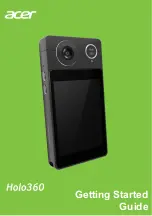
Bonito Technical Manual
V2.4.0
54
Parameters and commands
(
0x
4 =
bx
100), sets the bit field to „- - 0 0 - 1 0 0“.
•
Activates Image on Demand mode (IOD) (weight =
0
)
•
Activates PIV mode (weight =
4
)
•
Sets Exposure feature mode to Standard (weight =
0
)
Exposure control is not available in PIV mode, the exposure is permanently
active (the reset gate in every pixel is always closed). This has two practical
implications:
•
A synchronized pulsed light source is necessary in order to generate rele-
vant images that can be evaluated. To generate contrast-rich images,
ambient light has to be minimized.
•
To change the exposure time, change the frame rate. Exposure time of each
image is directly determined by the frame rate. End of exposure is defined
by the end of the internal charge transfer.
There are two ways to control the frame rate:
•
use parameter
F
to control the frame duration
•
use an external trigger signal and apply parameter
T
to select the trigger
source
However, the camera outputs two images per trigger event, therefore the high-
est trigger rate is limited to approx. half the usual rate (in non PIV mode).
Start of the PIV sequence
Since the exposure is always active, the sensor‘s photo-sensitive pixels are
always integrating charge. No shutter control is available; exposure time is only
determined by the frame rate.
You start the PIV sequence by the usual trigger input and timing devices of the
camera. Each rising edge of the selected input signal starts the PIV sequence.
The trigger high duration t
TH
should be shorter than the duration of N+1 lines,
but should be at least 500 ns.
Time needed for one
image pair
The minimum time t
T
between two rising trigger edges must exceed the time the
camera needs to charge and readout two images. It depends on Continuous
mode as shown in the table below.
Note
You cannot use the settings of the Exposure feature mode if the
PIV mode is active.
www
For practical applications of particle image velocimetry, refer
to the Allied Vision application notes online:
















































